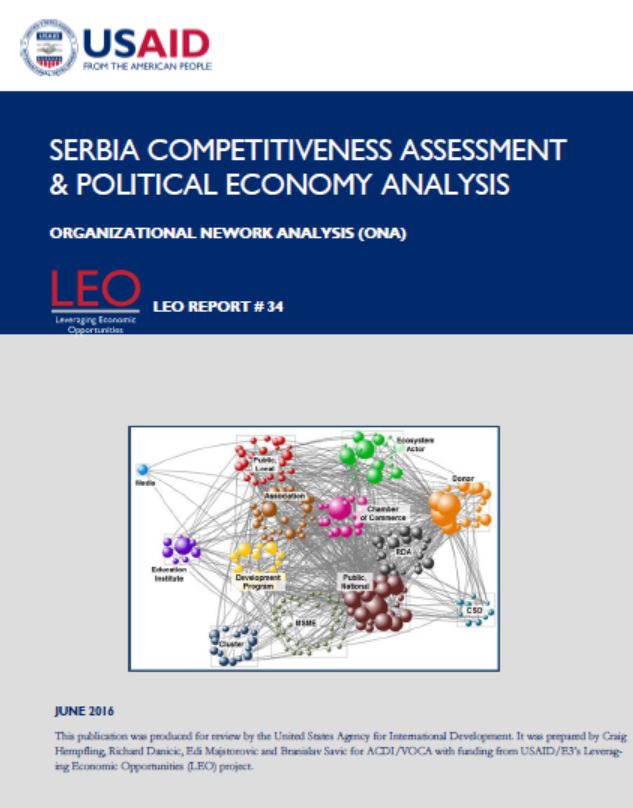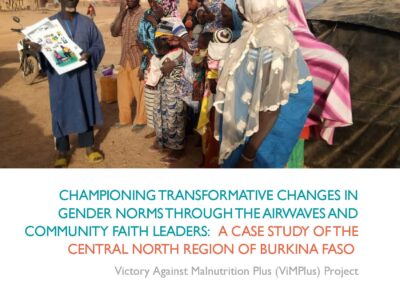
THIS REPORT
This report was prepared in conjunction with the Competitiveness Assessment & Political Economy Analysis for USAID-Serbia, conducted from March-May 2016. The overall assessment, conducted under a Political Economy Analysis (PEA) framework, set out to identify the major factors influencing Serbia’s private sector’s ability to grow, export and compete in EU and global markets. The assessment utilized the Applied Political Economy Analysis (PEA) methodology to identify the constraints and establish the causal factors for those constraints. This Organizational Networking Analysis (ONA) was conducted in parallel with the main research assignment; as agreed upon by relevant parties, this report is being submitted as a separate deliverable.
OBJECTIVES
At the outset of this assignment, ONA was identified as a tool to contribute to the overall assessment to assess the nature and context of relationships between key actors mandated to support MSME development. To that end, numerous findings are presented in this report. Additionally, and equally important, can be to use this opportunity to apply ONA to a new field and environment, document lessons learned in conducting ONA in tandem with other assessment frameworks, and contribute to the growing body of ONA practice in international development. To this end, this report presents a summary of lessons learned that can be applied in future undertakings, and provides the reader with an overview of ONA analysis, capabilities and potential indicators. The database prepared for this assessment may also be applied as a starting point or preliminary baseline for future USAID program(s).
ORGANIZATIONAL NETWORK ANALYSIS (ONA)
Organizational (or Social) Network Analysis is a tool that provides a quantitative means of measuring the strength and dynamics of networks and their actors; ONA has found recent interest and application in the development community, including by USAID, as a means of measuring our impact on the relations and cooperation between networks of actors. ONA enables practitioners to illustrate network maps, or “sociograms,” as well as to quantify network characteristics through calculable indicators, or “metrics.”







